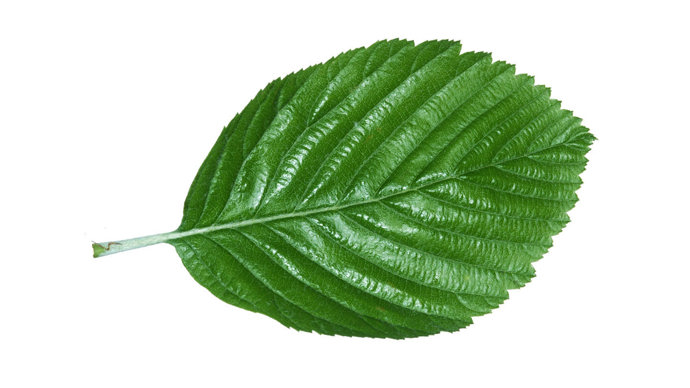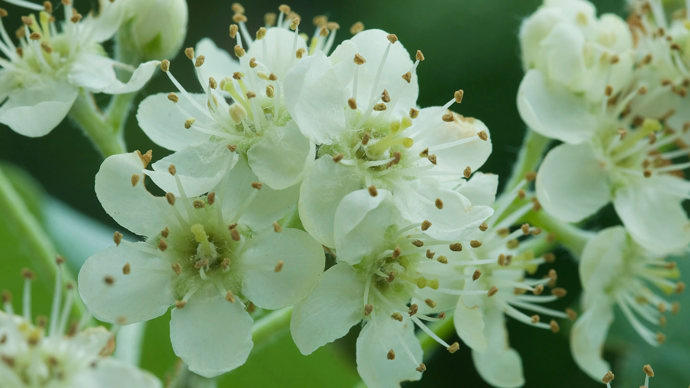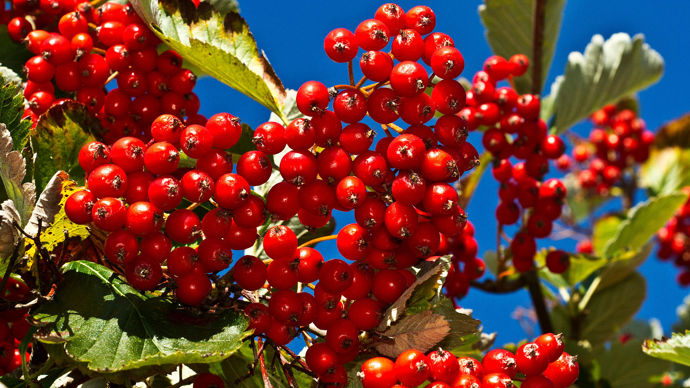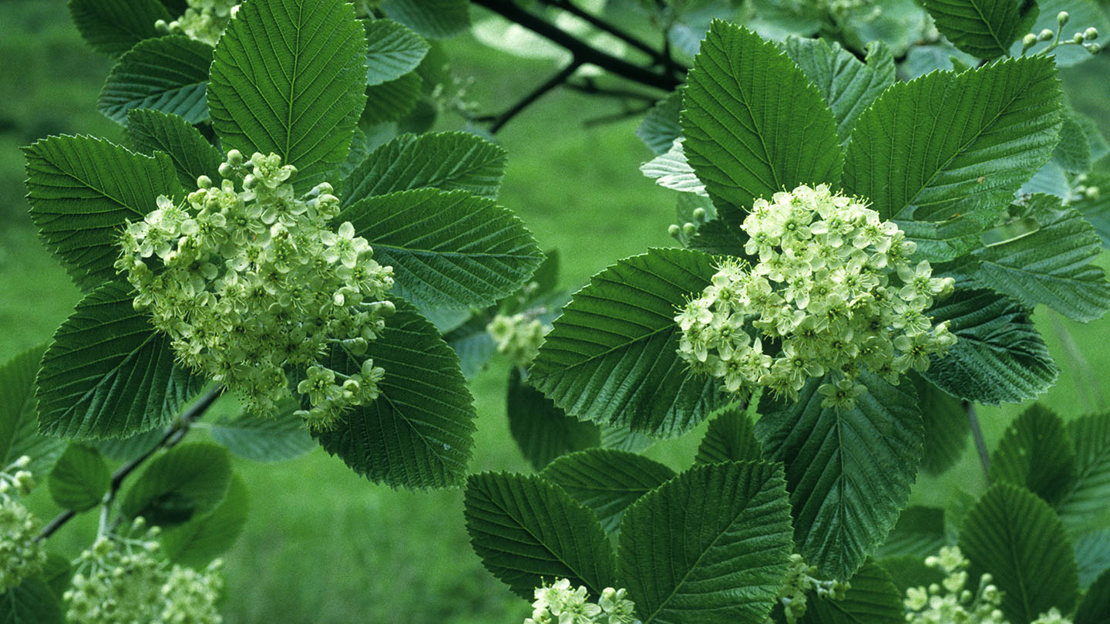Common names: whitebeam, common whitebeam
Scientific name: Sorbus aria
Family: Rosaceae
Origin: native
Charming and domestic, the whitebeam’s fruit is a favourite of garden birds. It’s rarely found in the wild but is a popular ornamental tree in parks and gardens, with lovely blossom and russet autumn leaves.
Common names: whitebeam, common whitebeam
Scientific name: Sorbus aria
Family: Rosaceae
Origin: native
Whitebeam is a deciduous broadleaf tree that is compact and domed. Mature trees can grow to a height of 15m. The bark and twigs are smooth and grey and the shoots are brick red in sunlight but greyish-green in shade.
Look out for: the oval, serrated-edged leaves that are softly hairy underneath and dark green and shiny on top.
Identified in winter by: the young twigs which start hairy and become smooth later. Only the edges of the buds are hairy.

Credit: Nature Photographers Ltd / WTML
Leaf buds are green and pointed and leaf stalks are short. Leaves are thick, oval and irregularly toothed, with the underneath covered in white, felt-like hair. When the leaves first unfold they look like magnolia flowers. They fade to a rich russet colour before falling in autumn.

Credit: Nigel Bean / NaturePL.com
Whitebeam is hermaphrodite, meaning each flower contains both male and female reproductive parts. The five-petalled flowers appear in clusters in May, and are pollinated by insects.

Credit: Nick Greaves / Alamy Stock Photo
Flowers develop into scarlet berries, which ripen in late summer or autumn.


Download our free Tree ID app for Android and iPhone to identify the UK's native and non-native trees. It's an A-Z tree guide in your pocket.
Whitebeam is native to southern England, though widely planted in the north of the UK. It is common in parks and gardens, but is quite rare in the wild.
The berries are known as chess apples in north-west England and are edible when nearly rotten.
The flowers are pollinated by insects and the berries are favoured by birds. The leaves are eaten by caterpillars of a number of moths, including Parornix scoticella, Phyllonorycter corylifoliella and Phyllonorycter sorbi.

Whitebeam timber is fine-grained, hard and white. Traditional uses included wood turning and fine joinery, including chairs, beams, cogs and wheels in machinery.
Whitebeam may be susceptible to aphids and blister mites.